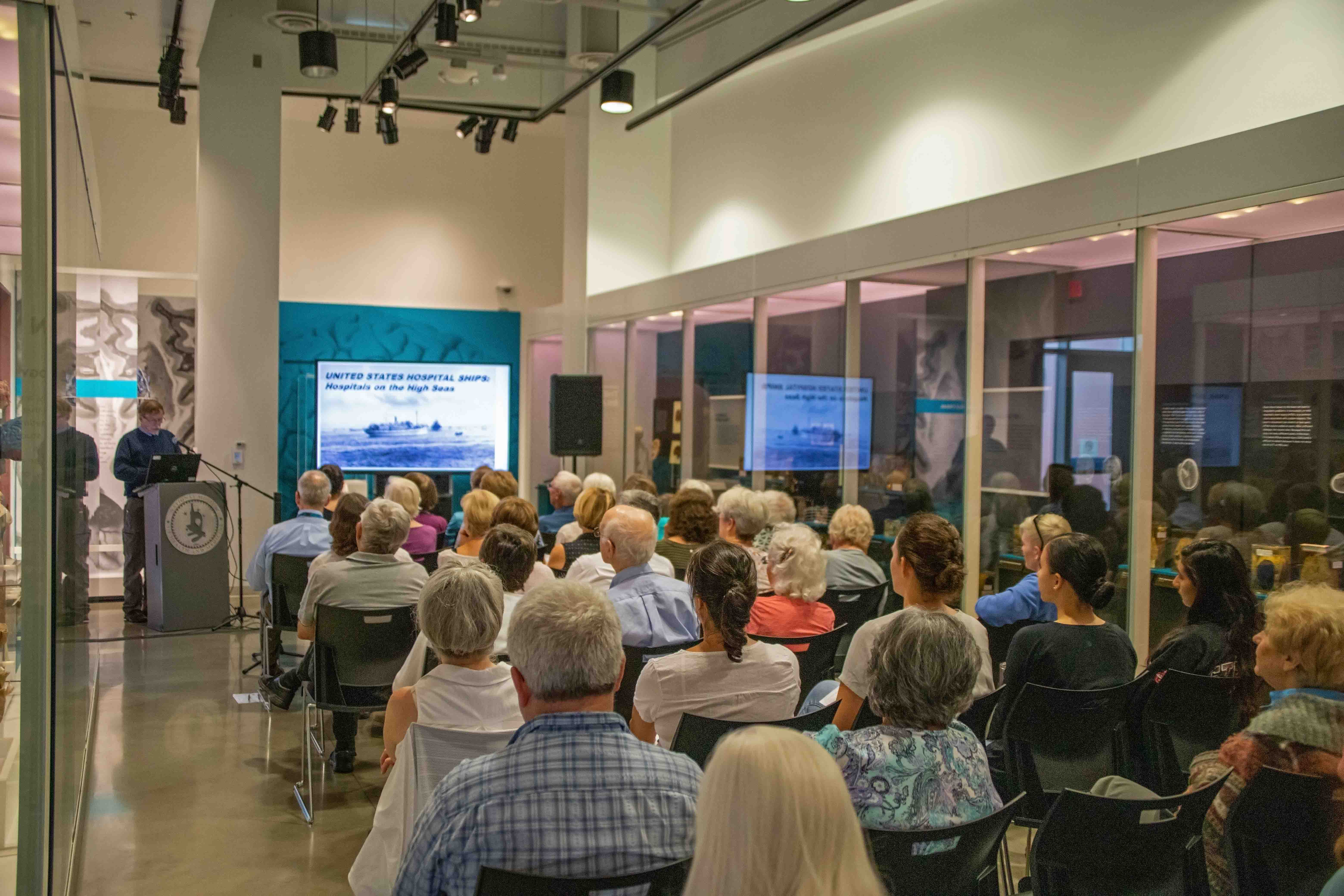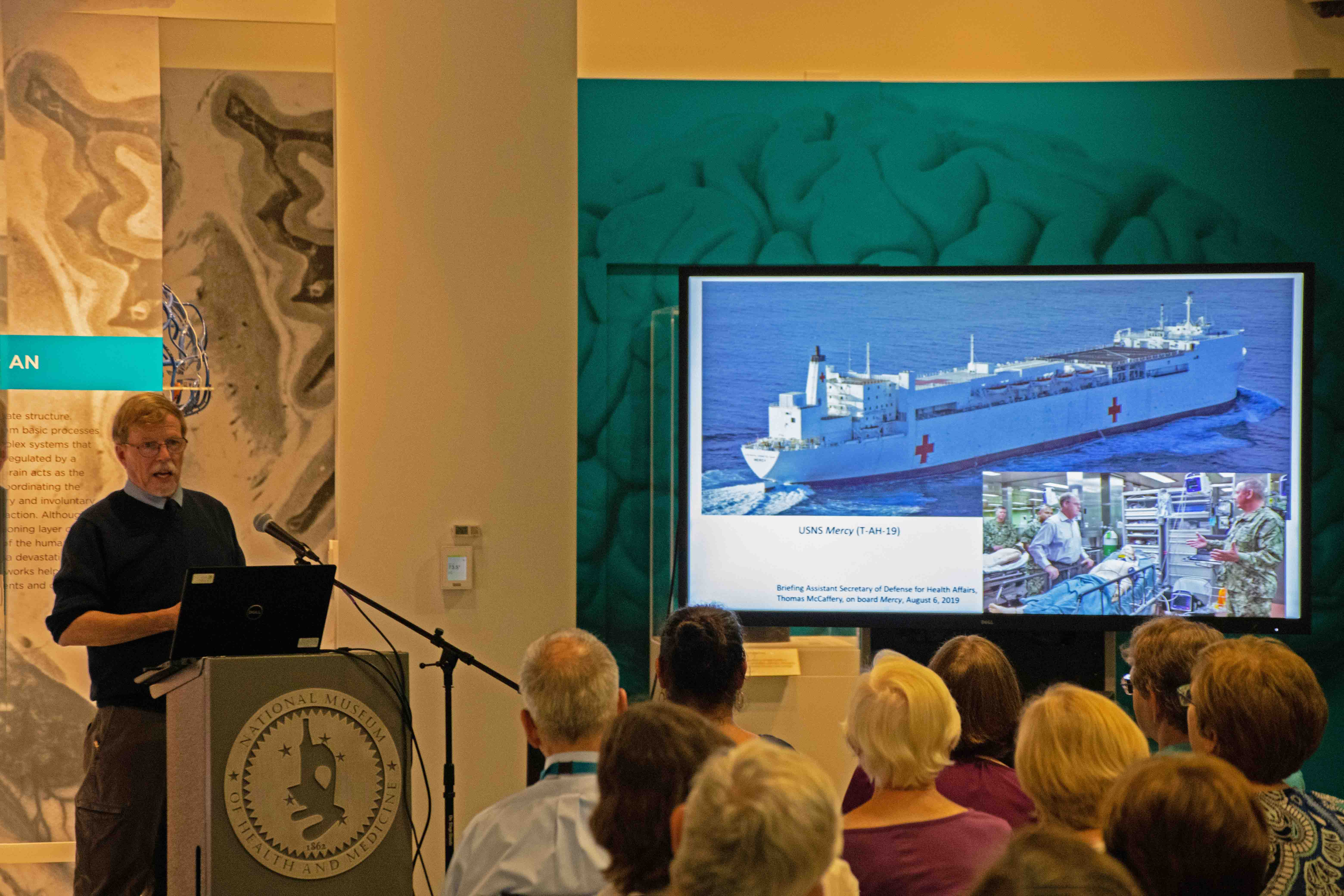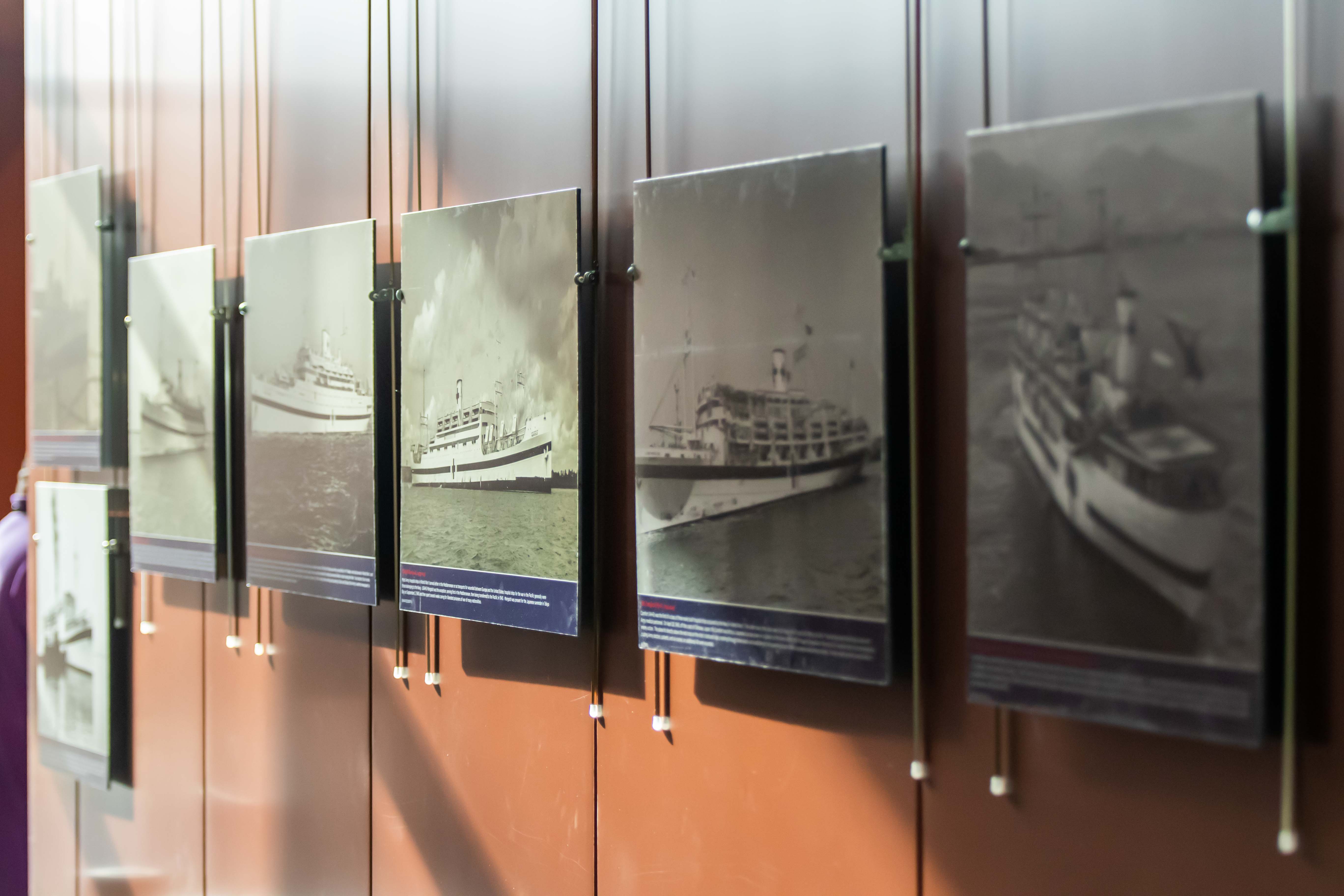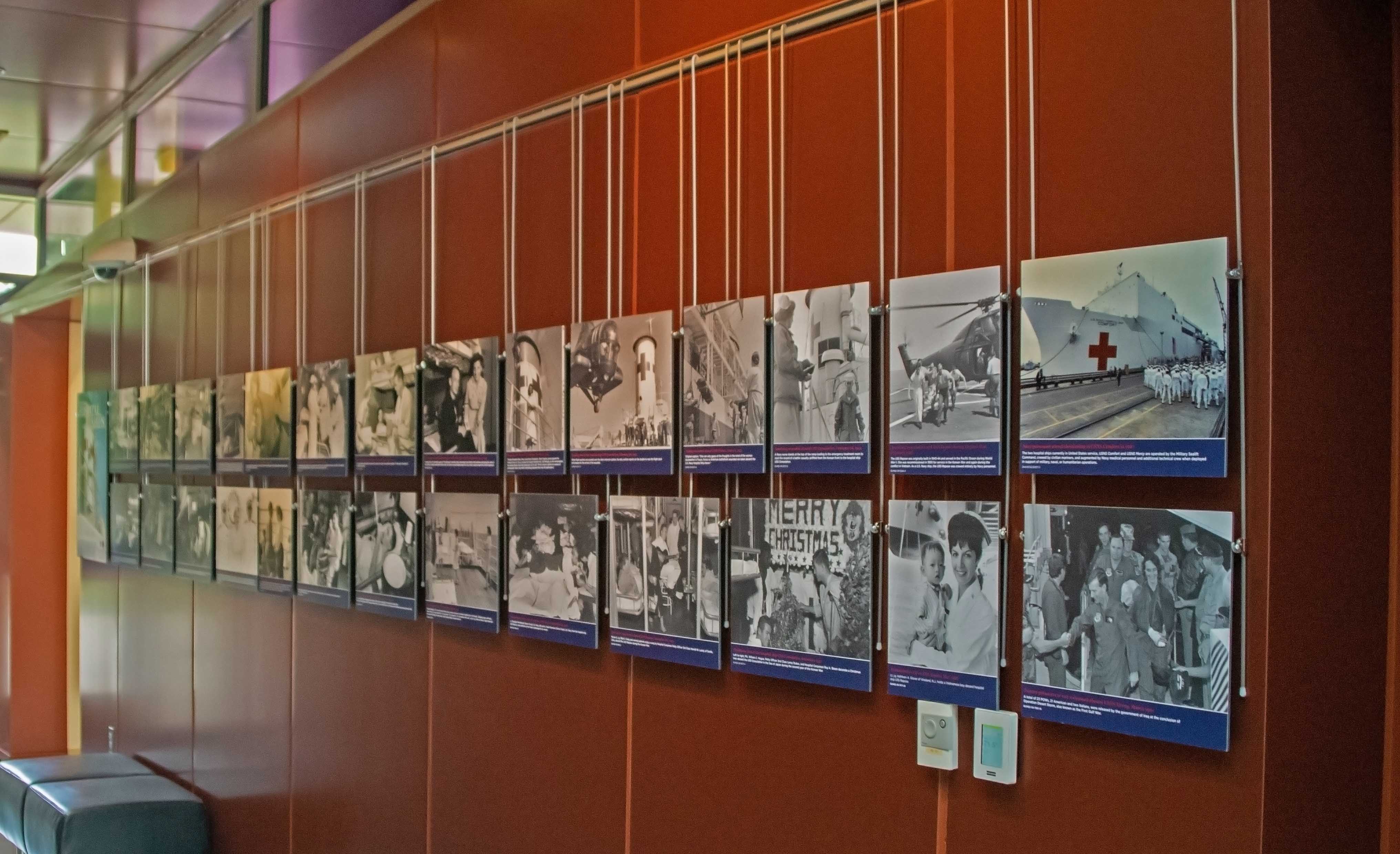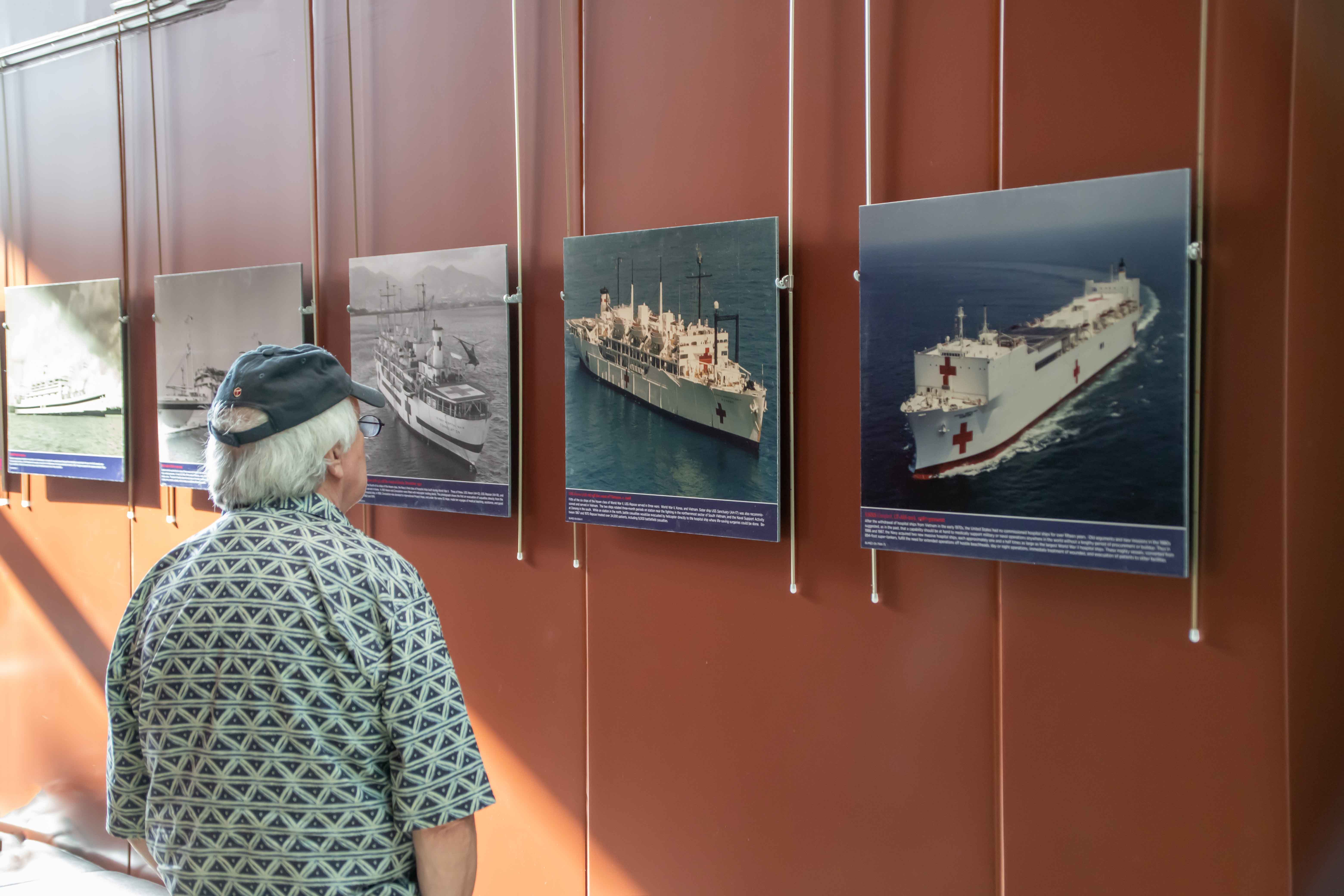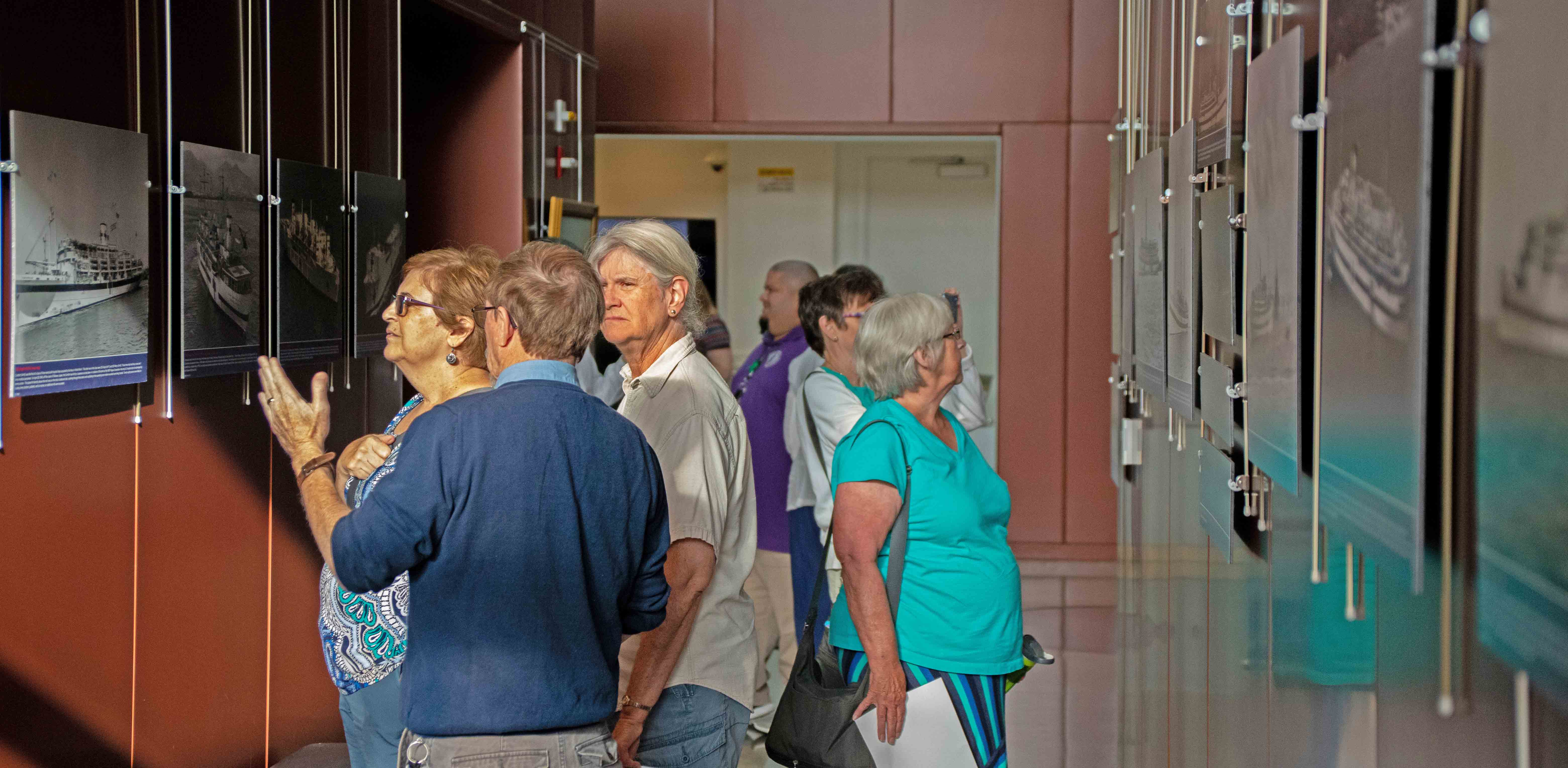Museum Exhibits Manager Chronicles the History of U.S. Hospital Ships
By Jacqueline Gase
NMHM Public Affairs Coordinator
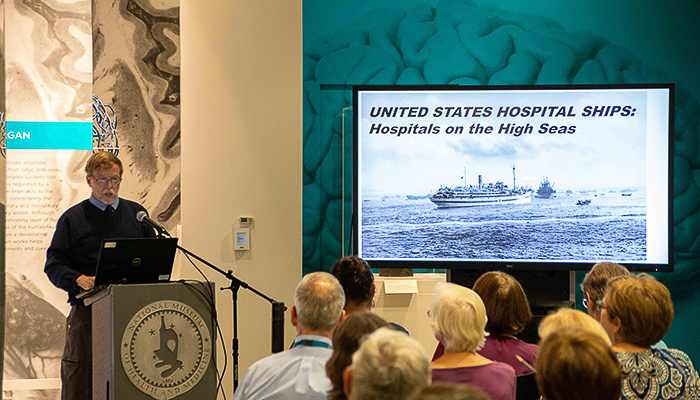
National Museum of Health and Medicine Exhibits Manager Steven Hill (left; background) presents a program on the history of United States hospital ships at the August 27, 2019, Medical Museum Science Café titled "United States Hospital Ships" at the museum in Silver Spring, Maryland. (NMHM photo)
On August 27, 2019, the museum's exhibits manager, Steven Hill, who is also a trained historian, presented a program about the history and use of the United States hospital ship at the Medical Museum Science Café titled "United States Hospital Ships." Hill discussed the development of hospital ships from the Civil War to the modern day, highlighting the importance of these floating hospitals to military operations and civilian emergencies such as humanitarian missions or disaster relief.
The first hospital ships were converted paddlewheel river steamers like the Union Army's D.A. January. The ship was fitted with 450 beds, an operating room, running water, bathrooms, a laundry room, and cooking facilities with a medical staff of civilian and military doctors and nurses. Hill noted that by the end of the Civil War, the D.A. January had treated approximately 24,000 wounded soldiers.
The hospital ship standard did not change until the Geneva Convention where rules of warfare were deliberated and hospital ships were formally addressed starting in 1868. Formal guidelines were finally adopted at the Hague Convention in 1907. Hill emphasized the importance of the Geneva and Hague Conventions on the legal designation and distinctiveness of hospital ships from other maritime vessels.
According to Hill, a hospital ship had to be entirely devoted to the care of the wounded and sick. A hospital ship also had to be registered as such, identifying itself using a white flag with a red cross. The ship also must be painted white with a green stripe around its hull. Finally, a hospital ship could support military operations but only at its own risk and peril. "It doesn't matter who is in charge, only how the ship behaves; so long as it follows the rules, and does nothing to harm the enemy, it is legally protected from capture or physical harm," said Hill.
During World War I and World War II, the U.S. Navy and Army continued to repurpose other vessels for use as hospital ships. The only exception was the USS Relief: the first and only Navy ship designed with the strict purpose of being a hospital ship. By the end of World War II, the Army serviced 24 hospital ships, while the Navy serviced 15.
Hospital ships continued to support active warfare until the withdrawal of combat forces from Vietnam. From then on, the U.S. had none for more than 15 years.
In order to support military readiness, the Navy acquired two new hospital ships in 1986 and 1987: the USNS Mercy and USNS Comfort. Hill stated these ships were twice as big as their historical counterparts with 12 operating rooms and more than 1,000 beds each.
The Mercy and Comfort are the only hospital ships still in service, "having deployed to assist thousands of service members and civilians throughout the world for over 30 years," said Hill.
After the event, visitors were encouraged to view a temporary exhibit curated by Hill. The exhibit, titled the same as the lecture and on display until March 2020, features photographs of the evolving hospital ships and details the lives of the crew and medical personnel aboard.
The museum's Assistant Archivist Trenton Streck-Havill also displayed materials related to hospital ships from the Otis Historical Archives after the lecture. A variety of written and typed correspondence from the Army Medical Museum (the museum's predecessor) reveal a desire from the museum's curators to acquire plans of the hospital ships Relief and Missouri in order to make models for the museum.
"There will be arguments questioning the current need for hospital ships and their great cost, but they have proved their worth, and even now, they are ready when needed and are a model for the world," said Hill.
The museum's public programs provide forums for informal learning that connect the mission of the Department of Defense museum with the public. For more information about upcoming events, call (301) 319-3303 or visit https://www.medicalmuseum.mil.
